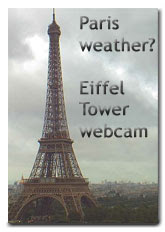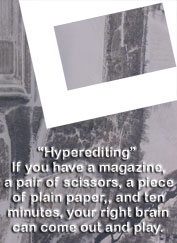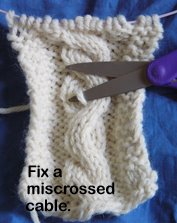.
You can tell it was *our* hotel room..... (So nice when they have these handy wide windowsills!)
For those of you who have yet to attend a large bridge tournament, this is what one looks like. Dozens and dozens of card tables in big rooms......
I walked from 12th and Market to 6th and Market, to the Independence Center. It is across the street from the Liberty Bell, which is across the street from Independence hall.
There were several interpreters who were in character as someone from revolutionary times.
Alas, I have forgotten Jane's last name. She was an enslaved woman who (with her two children), passed through Philadelphia on their way to South America, where her owner (a minister! shame on him!) was going to start a mission.
Laws regarding slavery were different, in Philadelphia, we were told. If a slave wanted to be free she could walk away from her owner.... There were a lot of free people of color in Philadelphia, who helped and supported those who were striving toward freedom. Jane managed to free herself and her boys, in the nick of time, with help from others.
Digression -- in various places outdoors in historical Philadelphia, there are 3/4 circle benches with signs saying "Once upon a Nation." There are often volunteer story tellers at these benches, who will tell you a story if you wish to sit for a few minutes and be educated/entertained. It was one of these story tellers who told me Jane's story. She, herself, told a story about Benjamin Franklin and some of the myriad things he invented. End of Digression.
This is David Franks. He was aide de camp to Benedict Arnold at the time of Arnold's treason, and was tarred with that brush, though he was innocent. Later in the war, he was a courier. He was able to take documents and large sums of money to Europe, as the stain on his character from Arnold's actions made it seem unlikely that he would be trusted with same.
This is Sarah Milton. Though she could neither read nor write, she owned property that she had purchased with money she earned. This was VERY unusual for a woman at that time, when essentially all property belonged to men (including the persons of their wives and children!)
Sarah was one of those amazing people who can look at a person and make a garment to fit. She could look at a dress, look at a person, and make that dress for that person. She made very high-end clothing for the wealthy women of Philadelphia.
Notice that her apron is held on with straight pins, rather than with a strap around her neck.
Sarah told me she had arranged to leave her property to her business partner, unless the partner took up with the man she was seeing. Sarah did not like that man. In that case, she would let her property go to her nephew (nearest male relative).
She asked me what I was doing in Philadelphia. I told her I was just wandering around, looking at things. She suggested I might like to take a National Park Service tour of Dolley Todd Madison's house, and Bishop White's house. I thought "Why not?" and signed up for the tour.
I left the Independence Center (partially visible in the bottom right corner), and went in search of something to eat. That is Independence Hall, directly in front of us. The Constitution Center (about which, more another day) is directly behind us.
The old and the new. It didn't occur to me at the time to wonder what the new building housed....
A better look at the top of the old building.
France is full of pavers like these. I believe they are much easier on the body (especially the feet) than flat pavement. The uneven surface lets every step you take bend your feet in a new way (assuming you are wearing flexible shoes). My feet love them.......
They are much rarer in Philadelphia than in Paris. I walked on them whenever I could.
Alas, I did not pay attention to the current use of this building. This is the coat of arms of the United Kingdom. 'Twas the "Honi Soit qui Mal y Pense" that caught my eye......
We have arrived at the Todd house. My ticket said the tour was for 1:30. No doors were unlocked. Other people were also walking around the building, trying all the doors.....
I wonder if the black-glazed bricks were glazed on all sides, or just on the ends?
Eventually the ranger showed up, and let us in to begin the tour. The house was air conditioned -- thank goodness.
We started in the kitchen. This fireplace doesn't look deep enough to allow cooking, but we were assured it was correct for the period and would have been used for cooking. (I am skeptical!)
Digression: It is always interesting to listen to more than one guide. It is not the case that all of one guide's "facts" will line up with those of the next! A cogent reminder to take everything one hears with a grain of salt! End of Digression.
Correct-for-the-period or no, I'm glad I don't have to bend over that low when cooking!
Note cupboards beside the fireplace. Every inch of space in this house was used. There were many cupboards in small spaces.
The point was made that most of the ground floor was used for the
kitchen and dining room (which was used more nearly as we would use a
family room now). The last ground-floor room we visited was John's law
office. He had a successful practice, and employed a clerk.
I can't think why I didn't take a pic of the facade of the house, at least, but I didn't. It is a row house, and is on the corner (so has windows on the side as well as the front and back). (If you click through to this link, you will see a pic of what I think of as the side of the house, though I suspect it held the main entrance. We went in through the door inside the picket fence.) Dolley and John Todd lived in the house, along with their two sons, Dolley's two young sisters, and John's law clerk.
Next, we went upstairs. This room was set up for clothing maintenance. Mending.
And ironing. I hadn't thought about what surface might have been used for ironing. I wonder that it didn't take the finish right off the table.
Now we are in the parlor, also upstairs from the ground floor. Formal reception was done upstairs, in a room like this.
Dolley and John Todd were Quakers. Ostentation and ornamentation were antithetical to their beliefs. They were comfortable middle-class people, but their decor was relatively spare.
This is not the kind of thing I want to own, but I think it is elegant and beautiful.
In 1793 there was an outbreak of yellow fever (which is carried by mosquitoes). Nearly everyone who could afford to leave the city did so. John Todd left, but then came back, as there was much legal business resulting from the deaths caused by the fever. He contracted the fever himself, as did his clerk, and both died of it.
One of the Todd's sons died that year (not clear of what), as did John's parents. Dolley managed to put one foot after another, and, after a time, was introduced to James Madison. We were told it was likely that she entertained him in this very parlor.... They married, and she was First Lady when the British invaded in 1812. She is credited with saving a portrait of George Washington just before the British burned the original White House. (Thinking I really must read some biographies.....)
Little-kid garments on the bed in Dolley and John's room. (on the same floor with the parlor)
The floors are original. They could tell some interesting stories!
I was surprised that this relatively compact house would have two staircases, but it did. It had three floors above ground; we saw two of them.
The last room we visited was John's law office.
Fancy furniture, with tourists.
None of my attempts at capturing the filing system for law documents resulted in a clear image, alas.
.
Subscribe to:
Post Comments (Atom)









































2 comments:
Alas! That looks like my current legal document filing system. I loved all the photos and commentary until we got to this last picture. Sigh!
Oh dear. Sorry to end with a downer. :-)
Tomorrow -- all books of sermons; no legal documents...........
:-)
Post a Comment